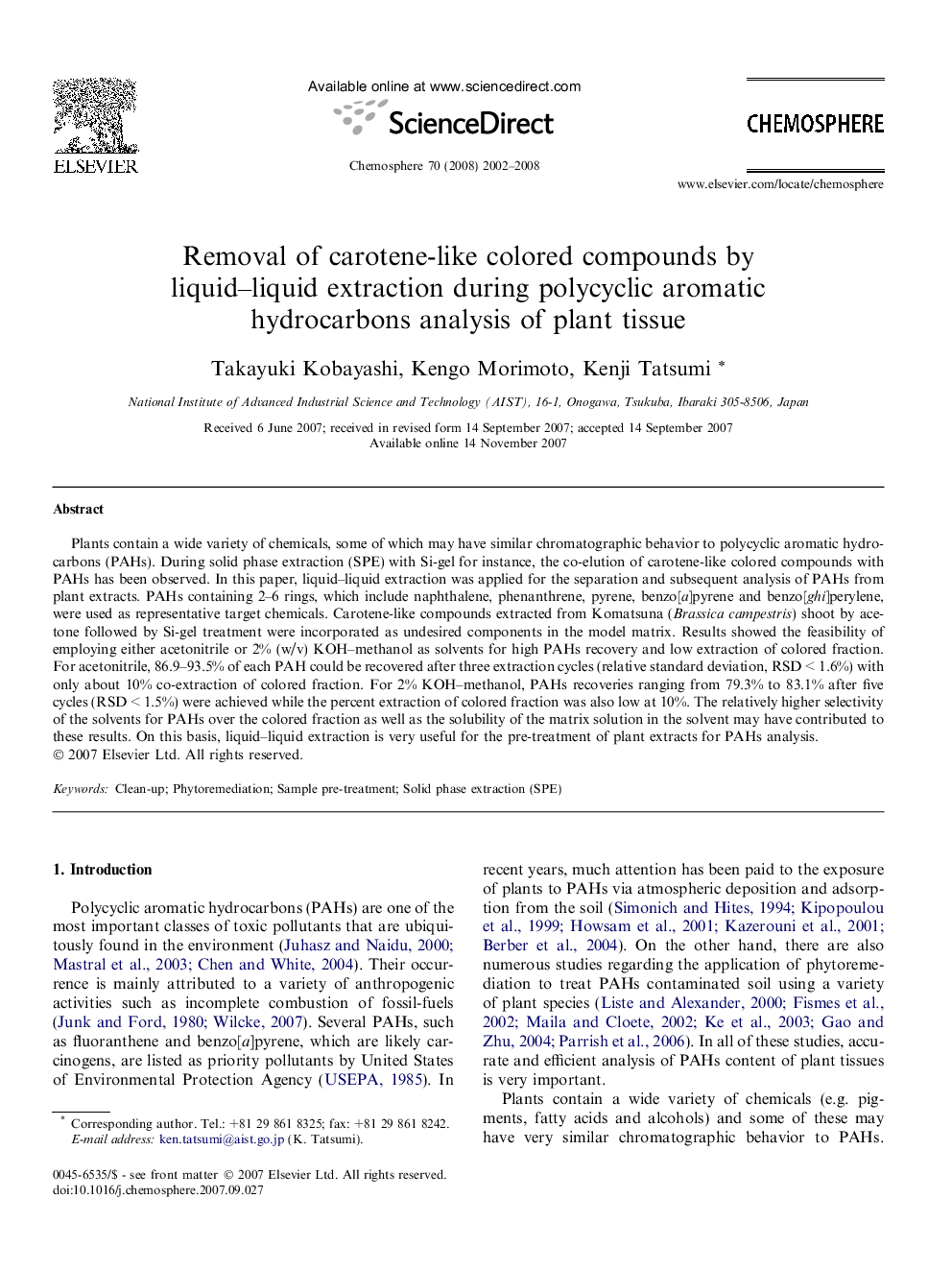| Article ID | Journal | Published Year | Pages | File Type |
|---|---|---|---|---|
| 4413948 | Chemosphere | 2008 | 7 Pages |
Plants contain a wide variety of chemicals, some of which may have similar chromatographic behavior to polycyclic aromatic hydrocarbons (PAHs). During solid phase extraction (SPE) with Si-gel for instance, the co-elution of carotene-like colored compounds with PAHs has been observed. In this paper, liquid–liquid extraction was applied for the separation and subsequent analysis of PAHs from plant extracts. PAHs containing 2–6 rings, which include naphthalene, phenanthrene, pyrene, benzo[a]pyrene and benzo[ghi]perylene, were used as representative target chemicals. Carotene-like compounds extracted from Komatsuna (Brassica campestris) shoot by acetone followed by Si-gel treatment were incorporated as undesired components in the model matrix. Results showed the feasibility of employing either acetonitrile or 2% (w/v) KOH–methanol as solvents for high PAHs recovery and low extraction of colored fraction. For acetonitrile, 86.9–93.5% of each PAH could be recovered after three extraction cycles (relative standard deviation, RSD < 1.6%) with only about 10% co-extraction of colored fraction. For 2% KOH–methanol, PAHs recoveries ranging from 79.3% to 83.1% after five cycles (RSD < 1.5%) were achieved while the percent extraction of colored fraction was also low at 10%. The relatively higher selectivity of the solvents for PAHs over the colored fraction as well as the solubility of the matrix solution in the solvent may have contributed to these results. On this basis, liquid–liquid extraction is very useful for the pre-treatment of plant extracts for PAHs analysis.
